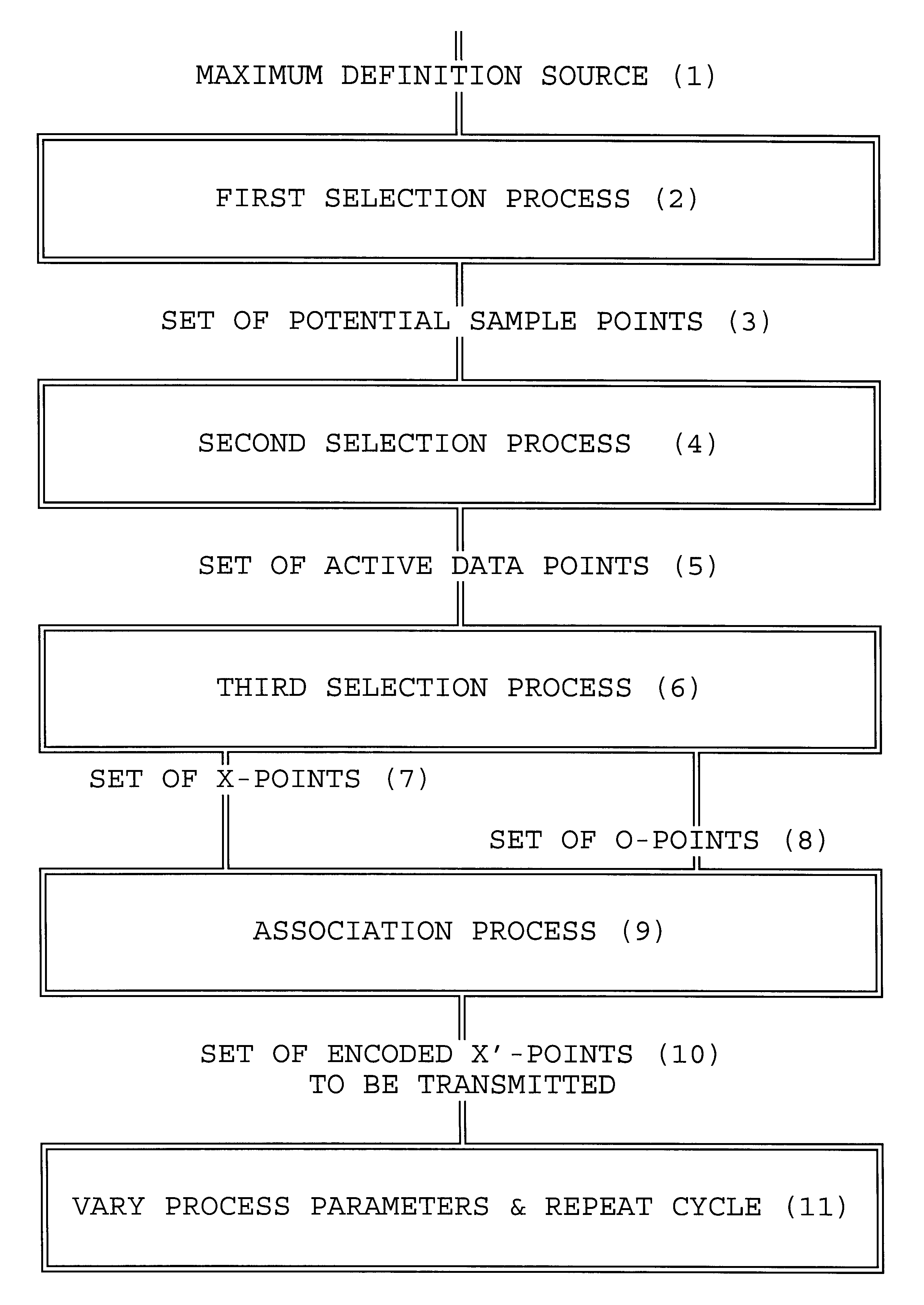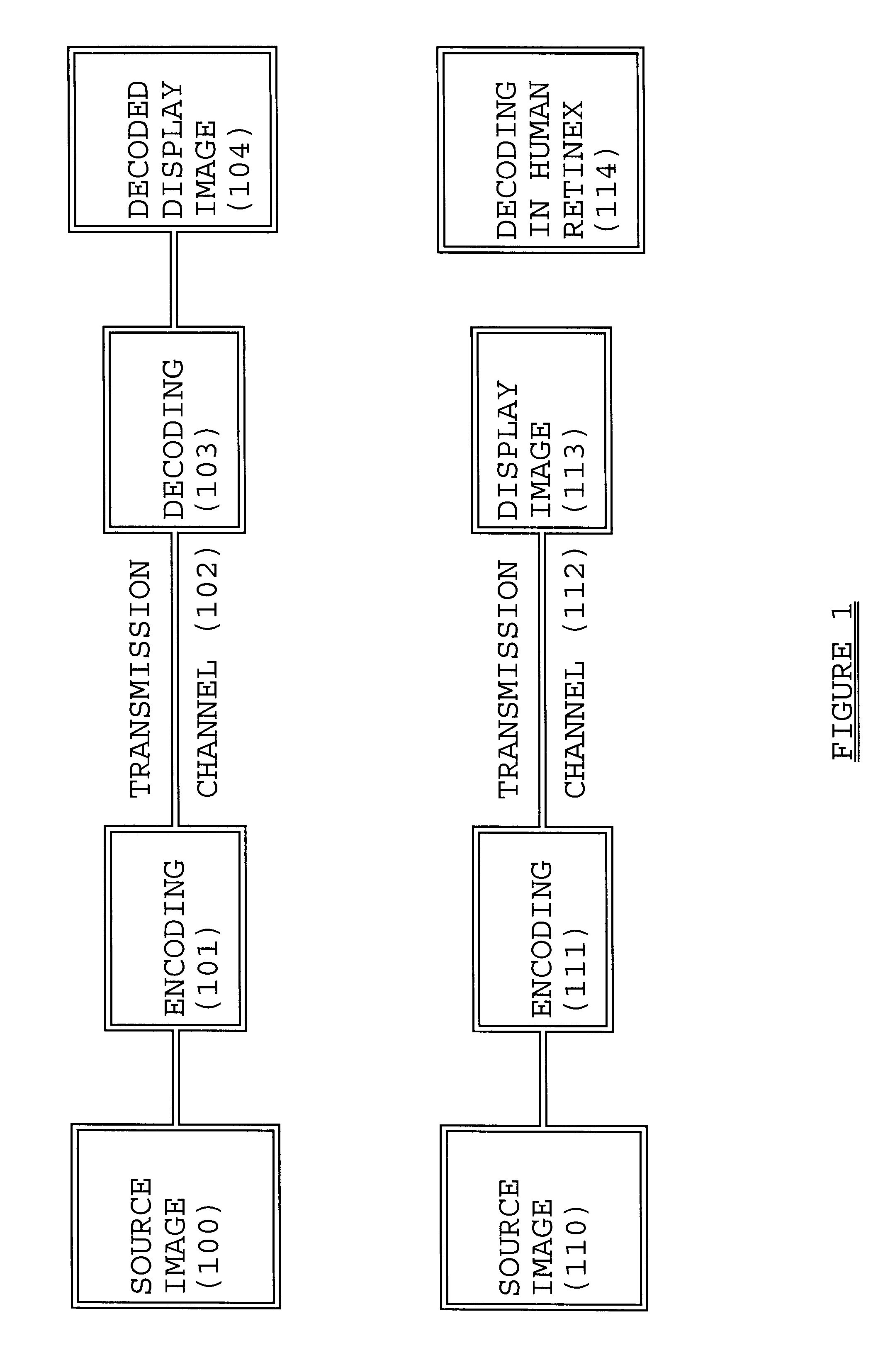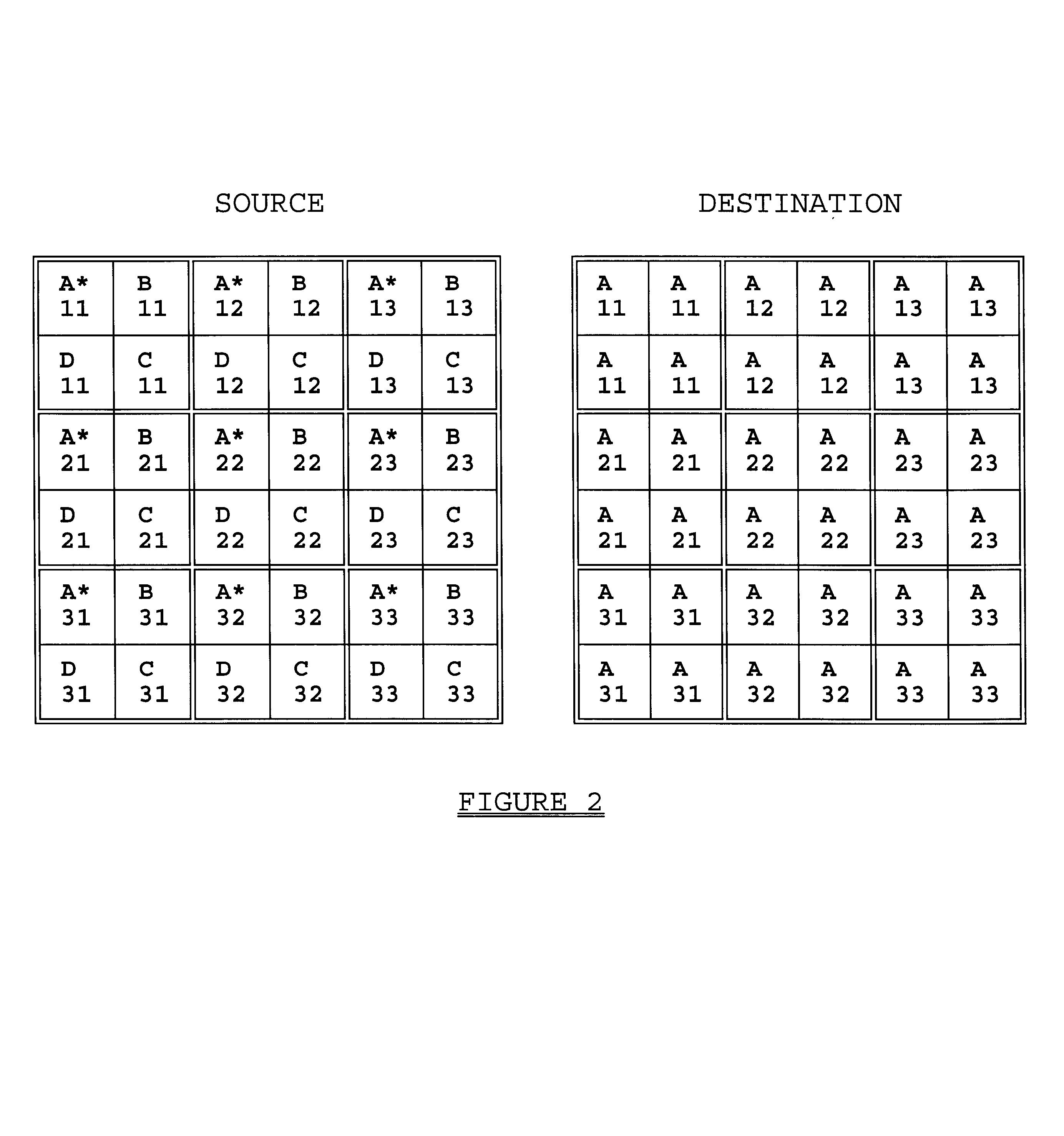Methods and devices for time-varying selection and arrangement of data points with particular application to the creation of NTSC-compatible HDTV signals
a technology of ntsc-compliant hdtv and data points, which is applied in the direction of color television with bandwidth reduction, television systems, instruments, etc., can solve the problems of large amount of time, effort and expense, and the inventive matter is limited to algorithms for selecting and arranging information
- Summary
- Abstract
- Description
- Claims
- Application Information
AI Technical Summary
Problems solved by technology
Method used
Image
Examples
Embodiment Construction
The instant invention relates to a method of signal encoding that is particularly useful for preparing a high-definition television signal for transmission over a channel intended for lower resolution signals. It can also be used to improve the perceived quality of television systems, or for other purposes.
In brief, the invention comprises a system for selecting a subset of information to be transmitted, from all the information in a frame, and for varying the parameters of selection from frame to frame. This results in the reduction of transmitted information, and improved perception on the part of the viewer when compared to non-varying selection schemes.
In order to understand the invention more fully, it is helpful to examine certain aspects of film and video display systems, their shortcomings, and the functioning of the human visual system.
Spatial / temporal Characteristics of Film and Video Systems
Film and video display systems each have their own characteristic "signature" sche...
PUM
 Login to View More
Login to View More Abstract
Description
Claims
Application Information
 Login to View More
Login to View More - R&D
- Intellectual Property
- Life Sciences
- Materials
- Tech Scout
- Unparalleled Data Quality
- Higher Quality Content
- 60% Fewer Hallucinations
Browse by: Latest US Patents, China's latest patents, Technical Efficacy Thesaurus, Application Domain, Technology Topic, Popular Technical Reports.
© 2025 PatSnap. All rights reserved.Legal|Privacy policy|Modern Slavery Act Transparency Statement|Sitemap|About US| Contact US: help@patsnap.com



